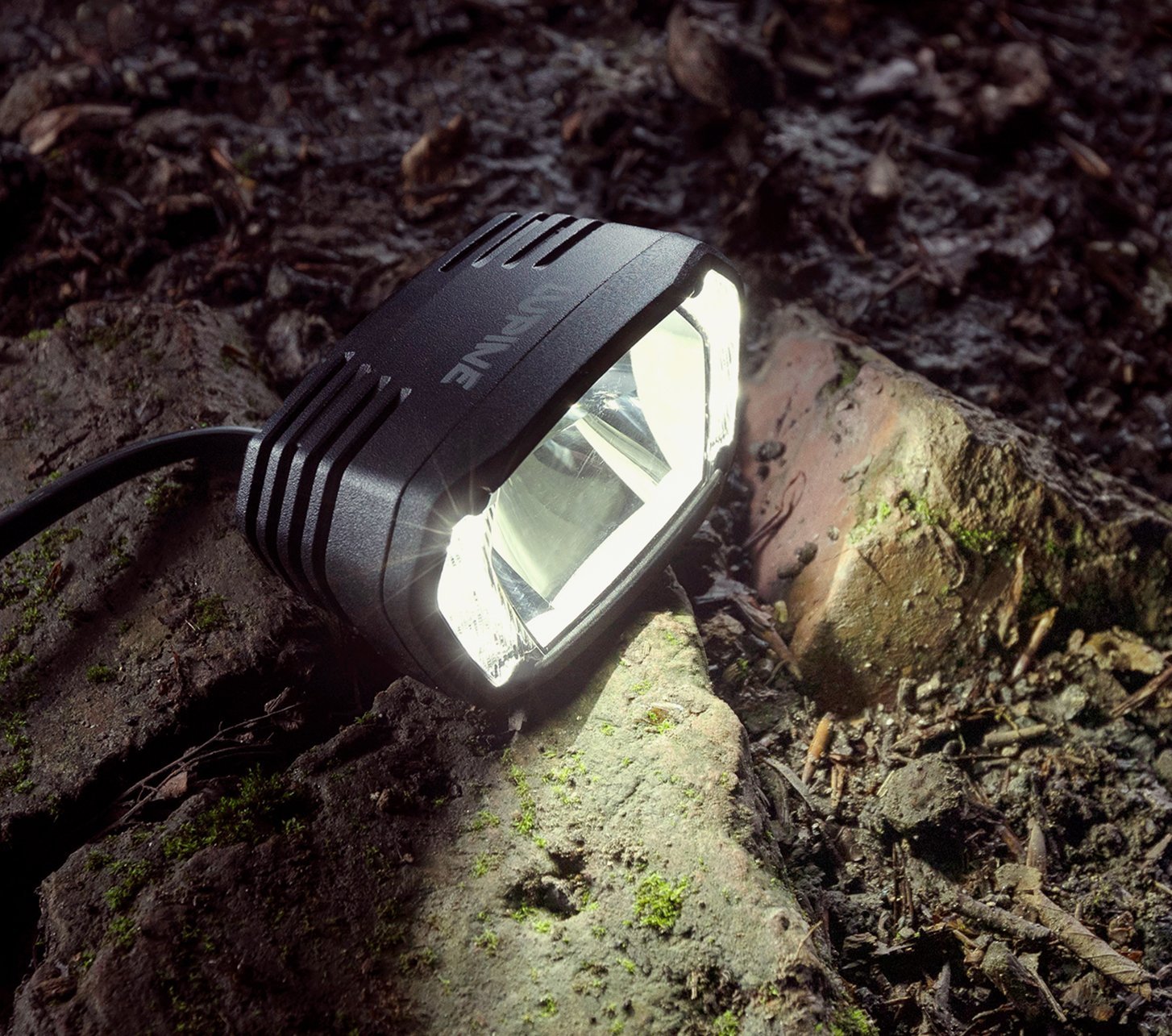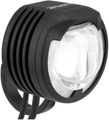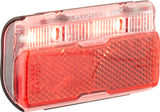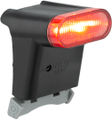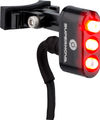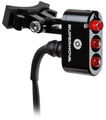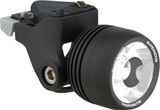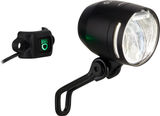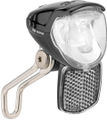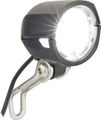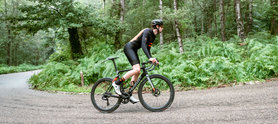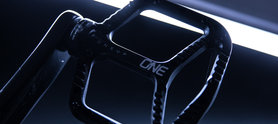E-Bike Light Comparison
To make choosing a bicycle light easier, we have tested various E-Bike lights in total darkness and at maximum brightness.
All lights were photographed using the same camera settings, so you can easily decide which one is right for you.
Camera-Settings:
- Camera: Canon EOS 1D X Mark II
- Apperture: F/10
- Exposure: 2.5 sec.
- ISO: 2000
- Focal Length: 24 mm
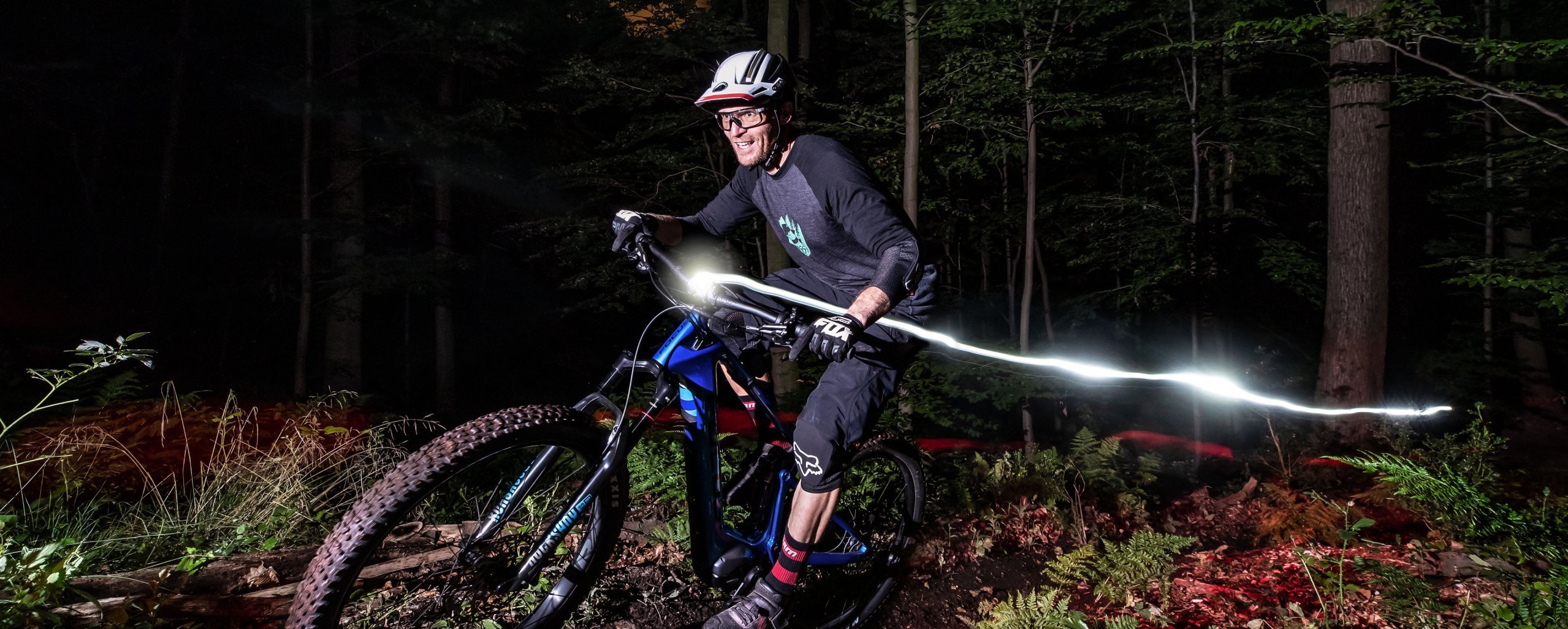
What to know when mounting lights on e-bikes
Note: StV(Z)O regulations apply only in Germany and do not apply elsewhere. Please consult with your local municipality for information regarding public safety regulations.
First and foremost, make sure you’re even allowed to change/mount lights on your e-bike*. According to German Road Traffic Regulations (StVO), a standard e-bike is totally equivalent to a bicycle. It does, however, fall under the so-called Machinery Directive, meaning certain guidelines apply when replacing individual parts such as lighting components. We have a guide concerning legal aspects of mounting accessories to an e-bike as well as a guide for component exchange developed by several bicycle associations (in cooperation with the Zedler Institute for bicycle technology and safety) available for download. These can give you a more accurate representation of the situation.
It should also be noted that installing or replacing lighting on an e-bike is sometimes much more complicated than on motor-less bikes. Errors can have more serious consequences and void a manufacturer's warranty. If you do not possess the necessary experience in electrical or automotive engineering to modify your e-bike yourself, we advise bringing it to a specialist workshop.
* By “e-bike” we mean the pedelec, which boosts pedal power up to 25 km/h. This applies to almost all electric bikes sold today. The term “e-bike” is therefore firmly established.
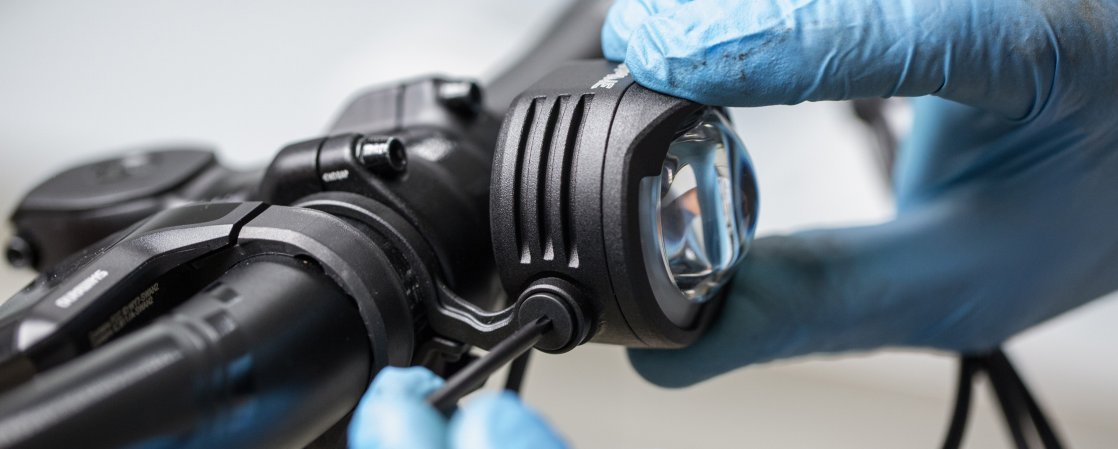
Lux and Lumen: Which is what?
Some manufacturers denote the performance of their lamps in lumens (e.g. Lupine), mostly others in lux (e.g. Busch + Müller), and still others indicate both values (e.g. Supernova). Lumen is the international unit (SI) for luminous flux and indicates how much light a lamp emits at a given time. Lux is the SI unit for luminosity and indicates the amount of incident light on a surface. Although the two units are closely related in terms of physics (lux is defined as the illumination produced by a luminous flux of one lumen when distributed evenly over an area of one square meter: 1 lx = 1 lm/m2), the values are not directly comparable. In short, 100 lumens is no better than 50 lux. However, these figures do not indicate the amount of light that hits the ground in front of the bike. The photographic images are different, which you can also see in our comparison test at the top of this page.
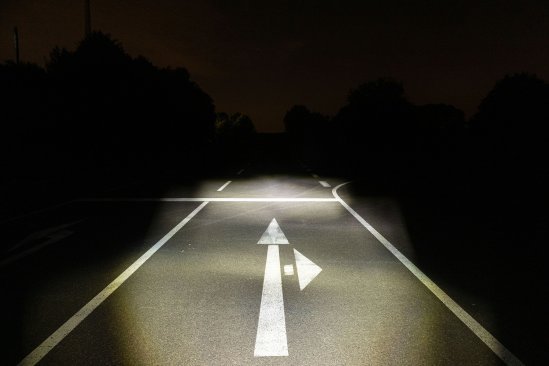
150 Lux of the busch + müller IQ-X E
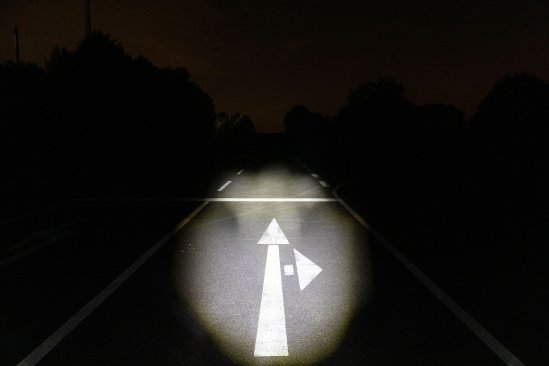
235 Lumen of the Supernova E3 E-Bike V521S HBM
What you should focus on when choosing the right e-bike headlight
First, the light must meet the technical specifications of the drivetrain - voltage is most important here. Pay close attention to the information on the product and ask our Service team when in doubt. Some headlamps are built for a specific voltage; some models from Supernova at about 12 V, Lupine lights can handle 6-12 V and thus fit most drivetrains. Others cover all systems, e.g. Busch + Müller with 6-42 or 60 V. The Supernova Mini 2 Pro belongs to a category of more discreet headlights, which can be mounted directly on the stem. Despite its small dimensions, the lamp is equipped with a daytime running light, a low beam (235 lumens) and a high beam (550 lumens). Busch + Müller's IQ-X E is hardly larger, but thanks to IQ technology it delivers 150 lux of homogeneous illumination to streets. The M99 Mini Pro 45 from Supernova has been specially reworked for E-MTBs. It has been optimised for long suspension travel and offers better upward illumination. Its ten LEDs provide 700 lumens (or 250 lux) in dimmed mode and 1,300 lumens (or 270 lux) in high beam mode. The SL X by Lupine, which sports a striking milled housing, is available in versions for either Bosch-, Shimano- or Brose- motors. It also features a handlebar button for switching between low and high beam, the latter providing 1,800 lumens/260 lux. Every one of these lights are suitable for handlebar mounting, so keep an eye out for brackets matching the diameter of your handlebars!
The right rear light for your e-bike
On mountain bikes with or without a motor, a battery-operated rear light is often a better option for design purposes than a wired light. Both versions are available for mounting on the seatpost (or seat tube) or on the seat stay - but you’ll have to pay attention to the visible placement on both sides. A real classic wired light is the tiny E3 Tail Light 2 from Supernova - the brightest of its size. There are different versions for 6 V and 12 V. Even smaller is the µ (pronounced "mü") from Busch + Müller, which comes with brackets for struts/seatpost and mudguard. Quite different from this is the clever C14 by Lupine, which is integrated into the saddle clamp ring and is available in the four most commonly occurring diameters.
In the relatively new category of “SUV” e-bikes, you will find not just MTB components but also mudguards and luggage racks, both options for mounting rear lights. Examples of such lights include the by Lezyne for luggage racks,which is equipped with a 270 degree angle that provides excellent side visibility.
Note: When mounting a rear light, always make sure that it can be seen properly from the side! It should not be covered by pockets or legs.
Please consider Mother Nature
Many e-mountain bikers like to take advantage of their integrated or retrofitted lighting during night rides, an activity which is not without its share of controversy. While twilight and night-time periods are times of rest for diurnal animals, they’re a fundamentally important active time for nocturnal animals to acquire food, reproduce or otherwise. In a densely-populated country like Germany, where wildlife habitats are severely fragmented and where there’s little space for expansion, local fauna is tightly constricted. Night rides will always affect and disrupt wildlife activity, so please be considerate! Ecologically valuable habitats such as conservation areas, nature reserves or national parks are taboo for night riding. Paradoxical as it may sound, winter is no sensible time for night riding in terms of ecology, even if the season seems more appealing due to shortened daylight hours. Disturbances at night make it more difficult for wildlife to survive. That said, stay close to populated areas and avoid riding during night hours -- give wildlife its space!

